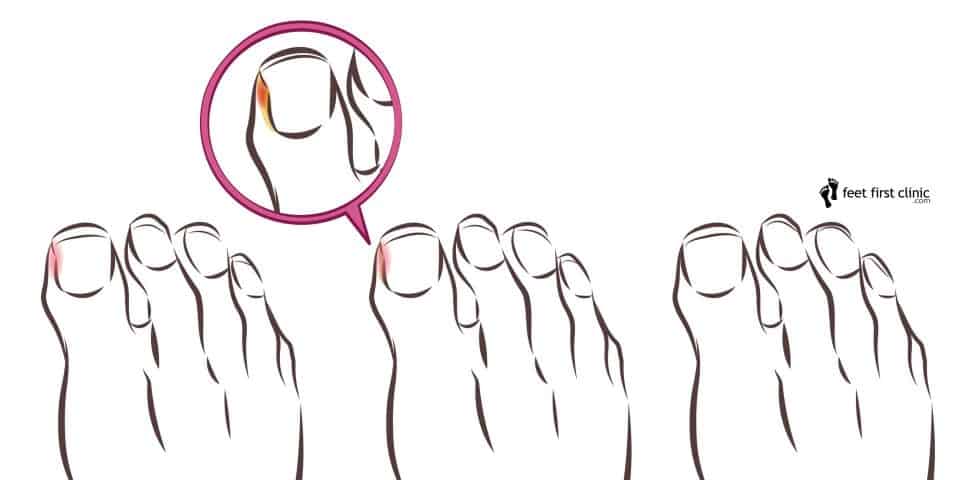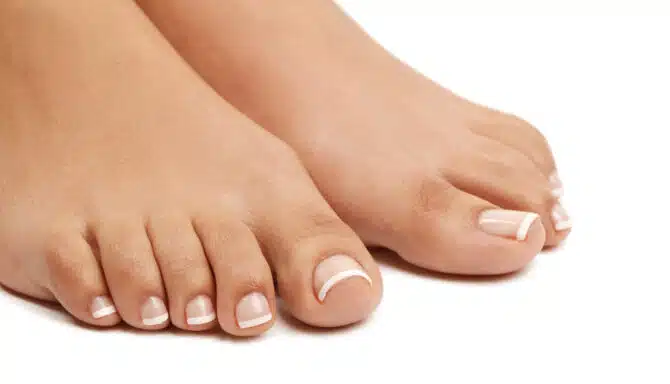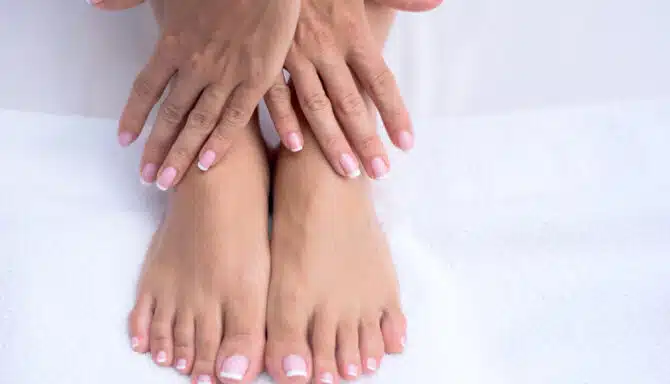An ingrown toenail is a frustrating foot condition that affects the edges or corners of our toenails. In most cases, an ingrown toenail will affect your big toe. The growth of an ingrown toenail pierces the skin next to the nail as it grows inwards, hence the name. Ingrown toenails can be accompanied by redness and slight swelling, are typically painful and may feel tender to the touch. They may seem like a minor issue, but ignoring an ingrown toenail can lead to infections, increased pain, and more serious foot conditions.
Today, we’re going to go over everything you need to know about ingrown toenails. At Feet First Clinic, one of our goals is to educate people on how to recognize the warning signs for various foot conditions: We’ll give you some tips on how to spot an ingrown toenail if you suspect you have one. We’ll also let you know some preventative tips for avoiding them in the future, as well as what treatment options are available to you.
What Causes Ingrown Toenails?
Luckily, the main causes of an ingrown toenail are lifestyle habits that we can change! Simple things like wearing an ill-fitting shoe or a bad job Cutting your toenails can contribute to painful ingrown toenails. A small accident, such as stubbing your toe or cracking your toenail can also lead to an ingrown toenail. Below you will find a list of the main causes of ingrown toenails (Don’t worry, we’ll also let you know how you can prevent them!):
- Wearing ill-fitting shoes that crowd your toes
- Naturally curled or curved toenails
- Not cutting your nails properly (cutting them too much or on an angle)
- A minor toe injury, such as stubbing your toe
- According to OrthoInfo, your nail may simply be too large for your toe
- Neglecting your toenails (not cutting them for a long time)
How do I Know if I Have an Ingrown Toenail?
Ingrown toenails look like small growths or swelling next to your toenail. They typically affect the big toe and cause tenderness and redness. If you suspect you have this foot condition, you should start treatment from home and also be assessed by a chiropodist.
Since ingrown toenails pierce our skin, untreated ingrown toenails can lead to an infection and other harmful toenail conditions, such as Toenail fungus. Symptoms of an infected toenail to look out for are:
- Bleeding
- Pus or drainage from your toe
- Worsening pain accompanied by throbbing
- Signs of toenail fungus (Cracked toenail, yellow discolouration, toenail odour)
If you suspect you already have an infection, we recommend seeing your doctor or a foot specialist immediately.
It should also be noted that Diabetes patients are at a greater risk of developing complications from ingrown toenails, like infection. This is due to diabetic neuropathy (nerve damage), a lack of blood circulation to the feet, and a compromised immune system. Diabetes patients should always maintain routine visits with a qualified foot specialist to pinpoint ingrown toenails, and other foot conditions, as early as possible.
How can I Treat an Ingrown Toenail?
Ingrown toenails can be treated with a combination of chiropody services and at-home foot care.
From home, you can soak your feet in a foot bath, which will properly clean your feet and ease foot pain. You should also ditch any shoes that are too small and invest in proper fitting footwear. Specifically, you may want to try wearing shoes with an open toe while you’re in the healing stage. Continuing to wear ill-fitting shoes will prevent the ingrown toenail from healing and make things worse.
Furthermore, a Chiropodist can provide the following treatment services for ingrown toenails, particularly if there are signs of infection:
- To stop the nail from piercing the skin, they can soften the skin and then lift the edge of the nail. This allows the skin to heal and the nail to grow properly.
- If an infection is present, your chiropodist may numb your toe with a local anesthetic before cutting open the infected area and allowing the pus to drain.
- Antibiotics, including creams and oral medications, can be prescribed in the case of an infection.
- Chiropodists can perform minor Surgical procedures (partial nail avulsion and total nail avulsion) for persistent ingrown toenails.
- Chiropodists can perform routine Nail care services. Many people find proper nail care difficult to maintain from home (so much bending!).
- Depending on your situation, your foot specialist may recommend routine follow-up visits. In any case, Annual foot assessments are encouraged for everyone to maintain optimal foot health.
How Can I Prevent an Ingrown Toenail?
From home, you should focus on learning how to cut toenails and keeping them properly trimmed. You should also keep your feet clean and observe your feet for cuts and scrapes. Proper footwear is also a key component to preventing future ingrown toenails. Your shoes should have a roomy toe box so your toes fit comfortably and aren’t bunched together.
Here is a comprehensive list of some preventative measures:
- Always cut your toenails straight across, never at an angle.
- Likewise, avoid cutting your toenails down too much.
- Wear shoes with enough toe room to avoid crowded toes. A Shoe fitting can help if you have trouble with this.
- We know it’s tricky, but be careful to not stub your toe.
- Keep your feet clean and dry.
- High-quality Footwear can also help you prevent toe trauma if you play sports.
Dealing with an Ingrown Toenail? Worry Not!
If you’re looking for more information, you can check out our downtown Toronto foot clinic’s Page on ingrown toenails!
Likewise, if you think you may need treatment, feel free to reach out to us. We pride ourselves in effectively communicating your concerns and needs as comfortably as possible. Don’t hesitate to call anytime to ask about your specific concerns. Our foot care experts are eager to provide actionable steps towards getting your feet as healthy as possible!
Call us at 416-769-FEET(3338) or Book Your Assessment Today!













